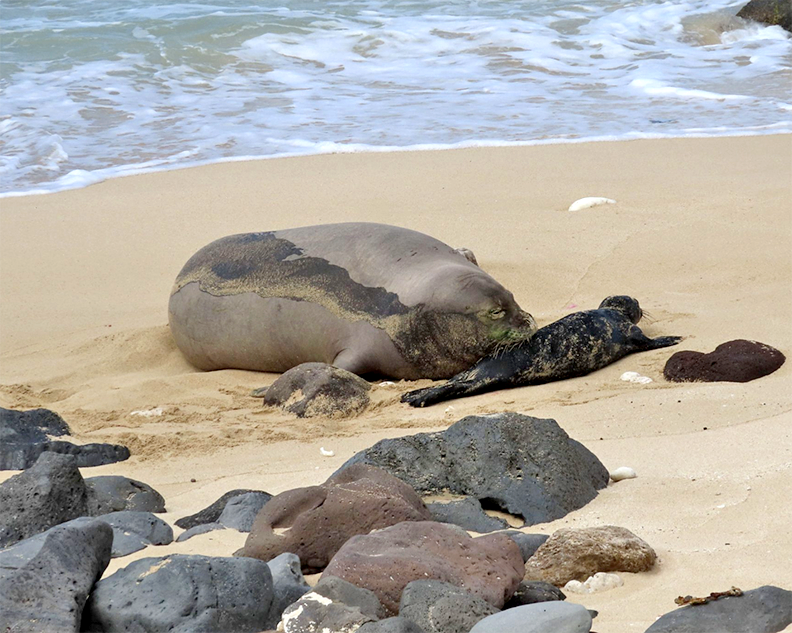By Jan TenBruggencate

A building at Hale Moi condominium in Princeville is seen here on Sept. 12, 1992, the day after Hurricane ‘Iniki hit Kaua‘i.
When we set aside a few days each year to remember some of those who gave service, it ought to remind us of all the others who do the same.
I think of the remarkable selflessness of so many Kaua‘i residents after both Hurricane ‘Iwa in 1982 and Hurricane ‘Iniki in 1992.
Everybody had lots of personal stuff to do, but you saw people clearing roads they didn’t live on. People with trucks taking friends’ loads to the dump.
Neighbors helping neighbors re-erect fences.
Folks lending tents and spare bedrooms to those who had been unhoused.
People with surviving kitchens cooking for those without.
Folks with generators running extension cords to neighbors’ refrigerators and washing machines.
Guys who knew how to fix a puncture hole in a tire were suddenly very popular — and I didn’t know any of them who charged money for doing it. When the hurricane destroyed homes and businesses, it distributed roofing and other nails and screws across roads and lawns islandwide. Many of them found their ways into car tires and through rubber slippers.
The most fun, perhaps, was distributing excess food from powerless freezers. Stories abounded of rich meals of lobster and steak, eaten in the shambles of wrecked communities, by the light of Coleman lanterns.
Kaua‘i did well, perhaps, in part because we’re so good at going camping. Many of us just resorted to weeks and months of campouts — living under tarps and tents.
I recall the story of a federal government official flying over Lihu‘e a day or two after one of the storms and asking, “Where did they get all those blue tarps?”
As the official looked down, he saw a community that was taking care of itself long before the famous white FEMA tarps showed up. Blue tarps formed shelters, covered holes in roofs, protected exposed family belongings, replaced missing shingles.
They were invaluable: polyethylene tarpaulins, with woven fiber for strength, grommets along the edge and a folded edge covering a cord for reinforcement.
If you lived in D.C. or New York City, it might not be usual to have a couple of folded-up plastic tarps in the garage. On Kaua‘i, it seemed unusual not to have them. And to share them. How many of those tarps belonged to a family down the street who recognized that someone else’s need was greater than their own?
We formally celebrate some of our selfless heroes: mothers for Mother’s Day, fallen warriors for Memorial Day. But there are so many others, even in non-crisis times.
Let’s remember to thank the volunteers, working selflessly as coaches, picking up trash, serving on government boards and commissions, holding the hands of the dying, stepping up without compensation and often at great cost.
And also the folks who are paid — often not nearly enough — to put themselves at risk for their neighbors: the police, the firefighters, the lifeguards, the ones who climb utility poles on stormy nights.
Selflessness is what defines a community.
- Jan TenBruggencate is a Kaua‘i based writer and communications consultant.
Discover more from ForKauaiOnline
Subscribe to get the latest posts sent to your email.





Leave a Reply